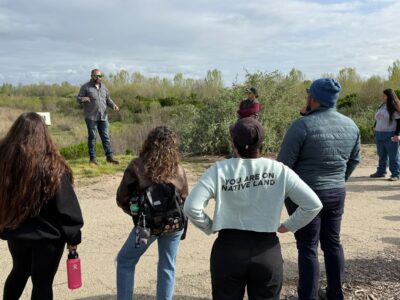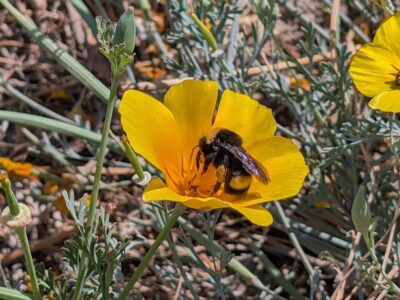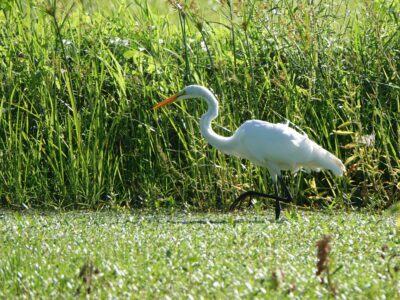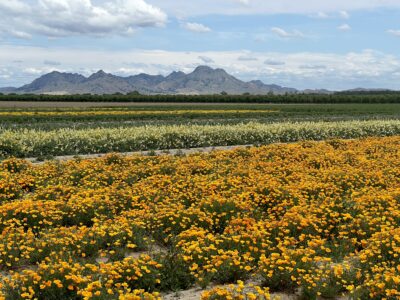Freshwater tidal marshland, a particular type of wetland found along rivers near the ocean, once wove through hundreds of thousands of acres across the Sacramento-San Joaquin Delta, which is the largest delta on the west coast of the Americas.
These marshes are not only teeming with diverse wildlife, but they filter runoff and pollutants from water, prevent erosion, build soil to buffer sea-level rise, sequester carbon, protect nearby towns from flood damage, and provide nursery habitat for juvenile salmon. Not to mention, they provide breathtaking vistas and recreational opportunities for people to connect with nature.
Today, very little estuary marsh habitat remains—only about 2%, at the most. It’s critical we actively re-establish the rich ecological network of these essential wetlands, and fast. Many native species who depend on tidal marshes are on the brink of extinction, such as salmon and Delta smelt.

CA Dept. of Water Resources Dutch Slough Program Manager Katie Bandy (left) with River Partners Director of Conservation John Cain (right) at the Dutch Slough levee breach celebration in October 2021. River Partners sat down with Katie Bandy to reflect on the incredible wins at Dutch Slough in the last year and look to what’s next for Delta restoration.

River Partners is proud to have partnered with the California Department of Water Resources (DWR) for years on major efforts to revitalize the Delta. This includes restoration under the state’s California EcoRestore initiative, which aims to revitalize over 30,000 acres of habitat enhancement and protection in the Delta region.
Dutch Slough, one of the first major freshwater tidal wetlands restoration efforts DWR implemented, is celebrating its one-year anniversary this month. The project aims to serve declining native wildlife species, provide a living laboratory to further scientific understanding of ecological restoration in the Delta, and provide public shoreline access, education, and recreational opportunities.
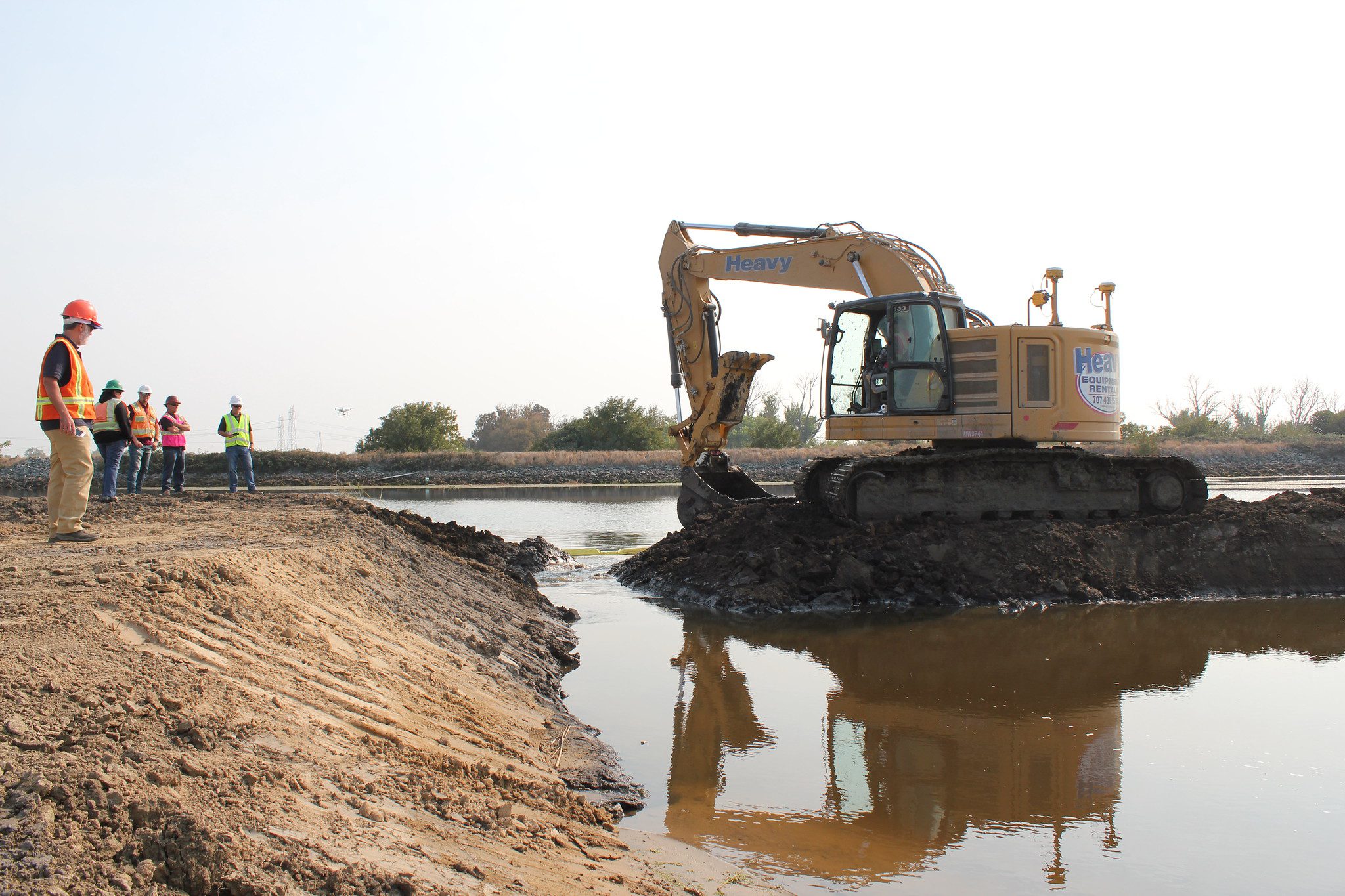
River Partners sat down with Katie Bandy, Dutch Slough Program Manager with DWR, to reflect on the incredible wins at Dutch Slough in the last year and look to what’s next for Delta restoration.
It’s been one year since the first levee was breached at Dutch Slough, restoring the flow of tidal waters. How has wildlife responded?
Bandy: It’s incredible to see how many different types of wildlife are responding to the habitat immediately: birds, mammals, amphibians, reptiles, and more. Currently, researchers from UC Davis are studying the terrestrial wildlife—essentially all animals excluding fish.
According to their research, Dutch Slough has the highest levels of species diversity compared to other properties in their study area of the Sacramento-San Joaquin Delta. It’s exciting to see Dutch Slough functioning as expected, and so early on.
We’re also looking at the aquatic community and the food web that’s being generated for fish and look forward to learning how that is developing now that the site has been reconnected with the surrounding channels for a year.

What have you learned in the last year?
Bandy: One thing we’ve learned is how much benefit we got from planting this project before we breached the levees, which is work River Partners completed. There were many reasons for this, but the decision to bring plants in before letting the tidal waters flow in has helped us in our fight to combat invasive species, both plants and animals, in both aquatic and terrestrial environments. That’s why we love partnering with River Partners: they bring their expertise and know-how to helping us achieve our goals to make high-quality habitat that functions well.

How critical are projects like Dutch Slough for building resiliency to climate change?
Bandy: I feel wetlands and tidal marshlands are the most important restoration efforts the state can focus on when it comes to climate change. They are hugely beneficial in carbon sequestration, with the added benefit of being wet. That’s significant because they’re a type of land that won’t burn. We can get lots of carbon sequestration from forests, but we can lose that potential in substantial fires. Wetlands are insulating from the effects of climate change and are a critical type of environment for building soil in low-lying areas threatened by sea level rise—not to mention all the benefits to habitat created for wildlife.
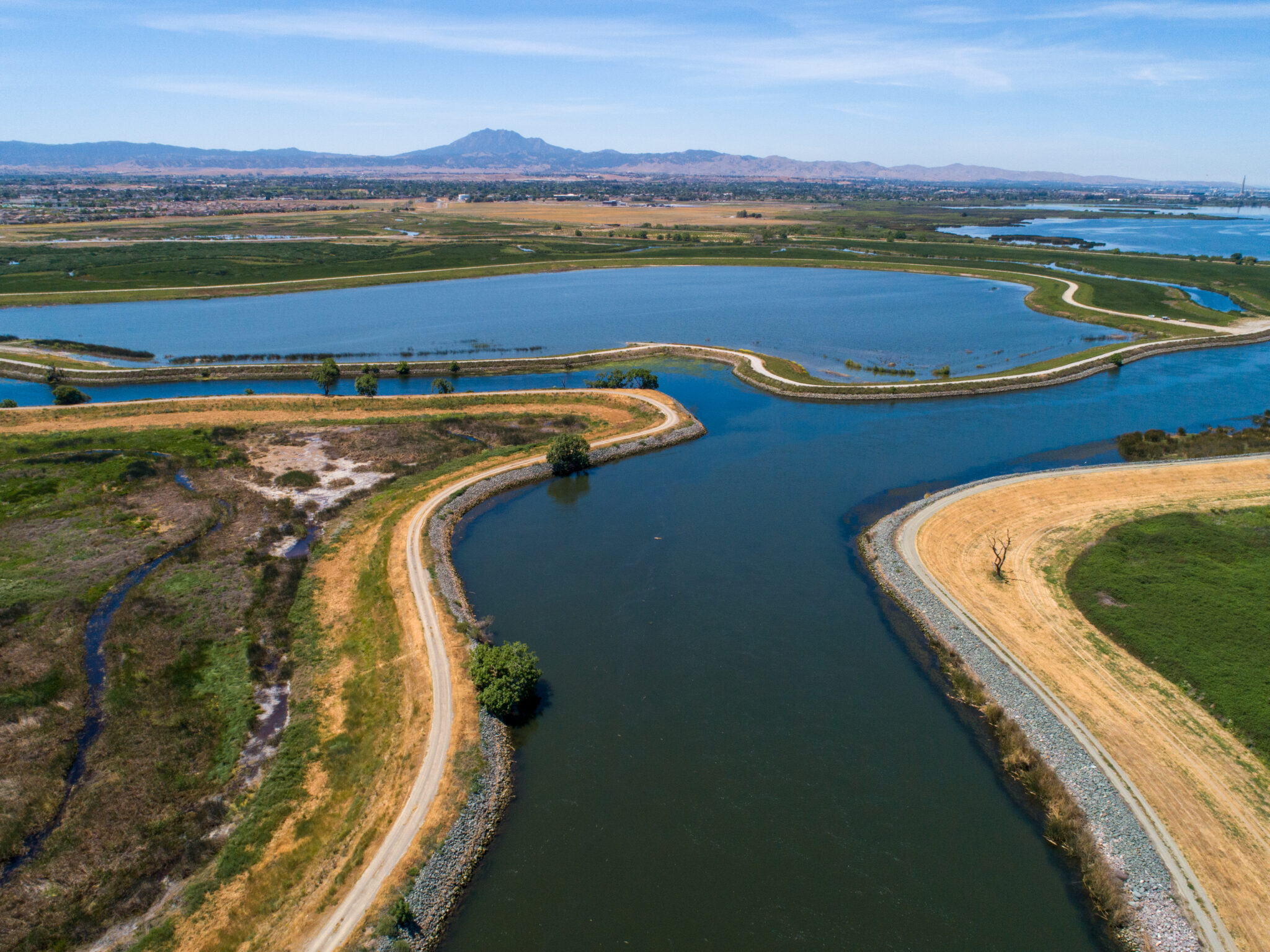
What’s next for Dutch Slough?
Bandy: We’re building another phase of Dutch Slough right next door. Our goal is to do more of these projects at an increased pace and scale. We’re also focusing on community access now that we’re out of the construction phase, working with East Bay Parks and the City of Oakley to meet the needs of local community members. People can currently view the site using the Marsh Creek Regional Trail, and we see bikers and walkers out there every day. We built trails into the design of Dutch Slough from the outset because access is incredibly important—people need connection to natural places.
People need a reason to want to protect the environment and wildlife. If people don’t have access to nature, why would they want to protect it?
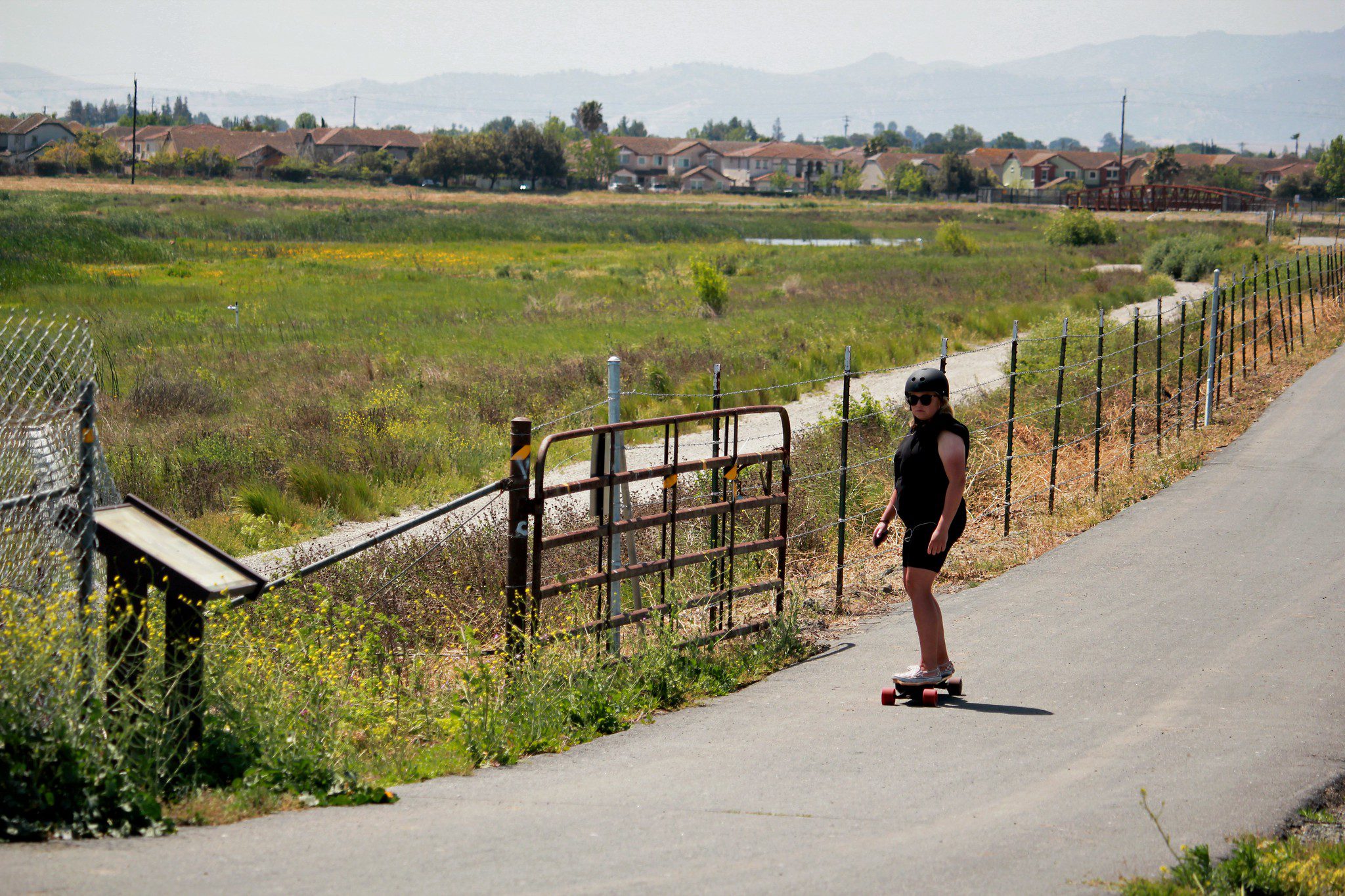
How has working on Dutch Slough impacted your life personally?
Bandy: Getting the opportunity to work on Dutch Slough has been an honor. It’s my dream job. I’m utilizing my biological expertise to help build appropriate habitats for fish and wildlife, as well as my regulatory knowledge for getting the project through implementation. When we started construction, we took the site down to a blank slate. Now, I’ve watched it turn into an amazing wetland in such a short period of time and become functional incredibly fast, which is more than I could have ever dreamed or expected.
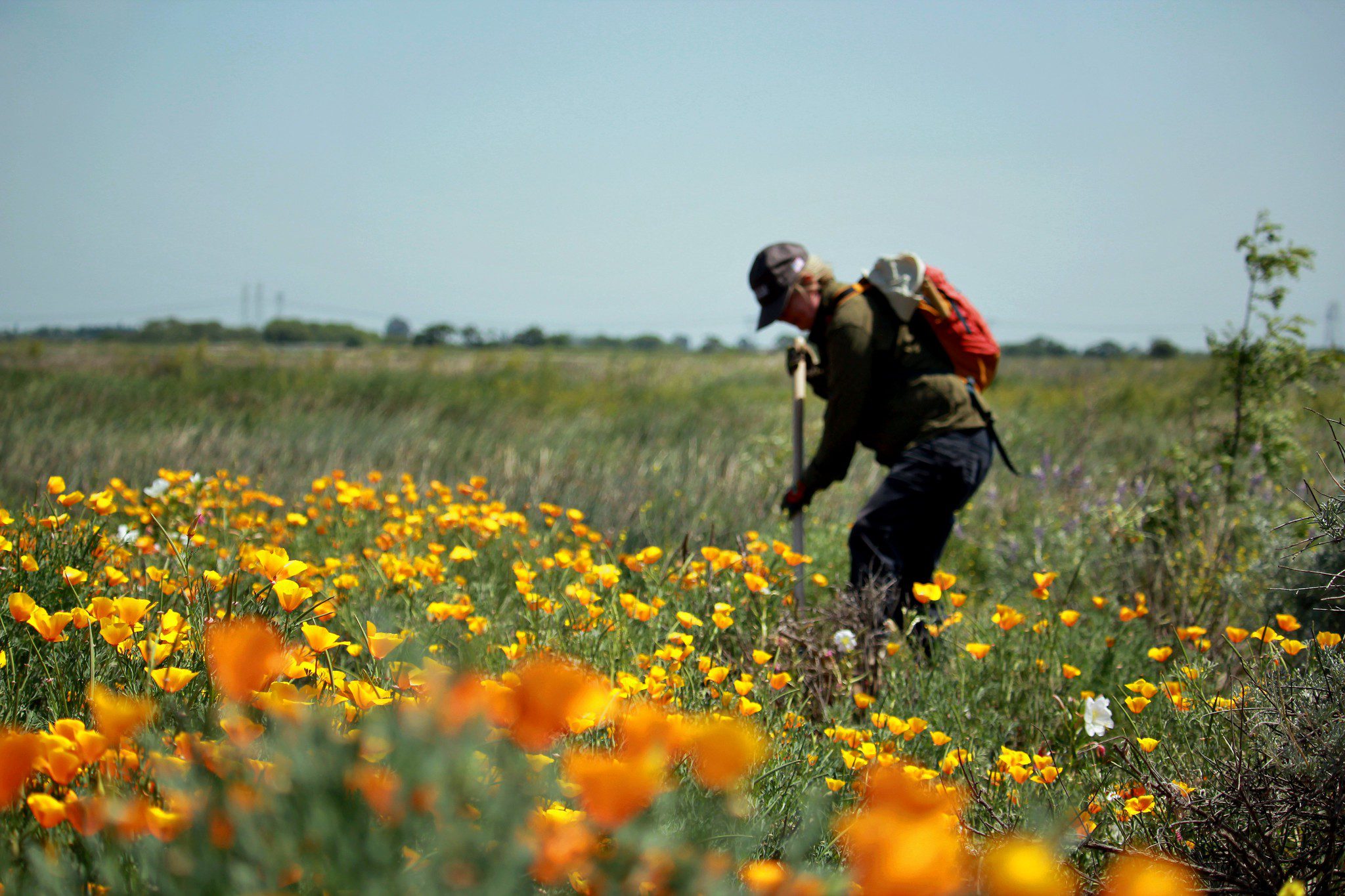
It’s amazing to watch the wildlife take advantage of these places. It gives me hope for the resiliency of our wildlife and our ecosystems. Reading the news can be really doom and gloom, so I’m glad people are interested in the Dutch Slough Project and these stories of hope that offer a pathway for how we can get through it.


